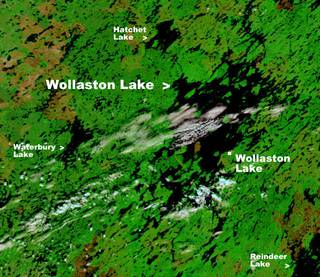
Sandy Island is a small island in Northern Saskatchewan, Canada; surrounded by Hatchet Lake. The island contains the main site for the Hatchet Lake Lodge . The island is treed, with a small and large sandy beach. The Island is accessed by the Hatchet Lake Airport and Hatchet Lake Water Aerodrome both owned by the Hatchet Lake Lodge.
